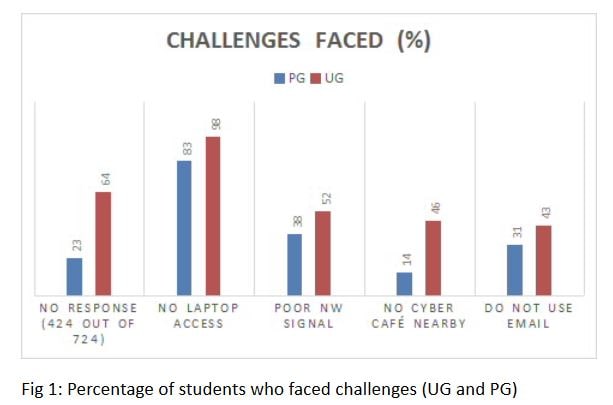Challenges of online education in Rural Karnataka
In villages, students face challenges to access the online courses conducted by their institutions mainly due to poor data connectivity, lack of access to laptops and smartphones, and power issues.
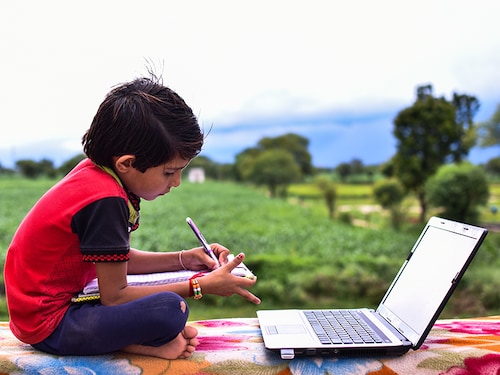

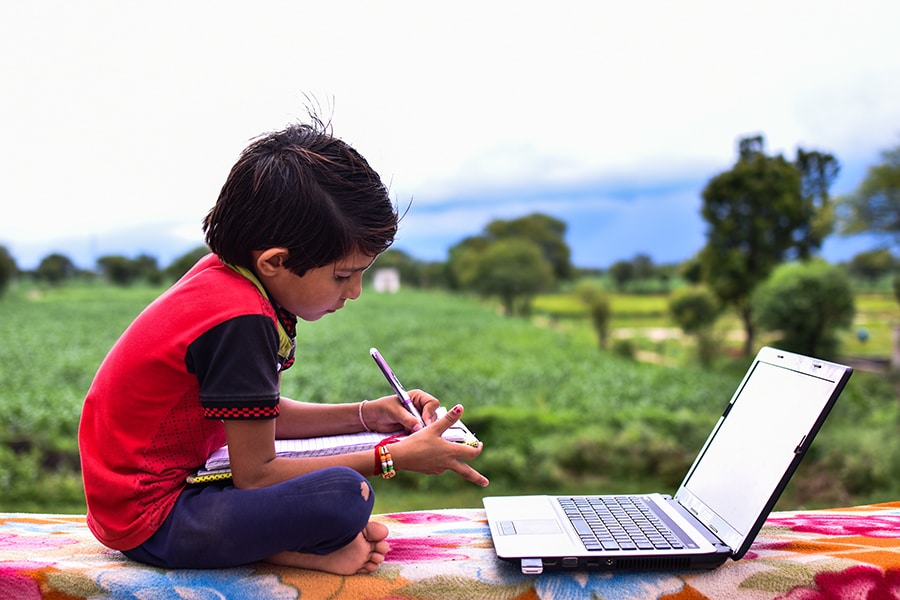 Image: Shutterstock[br] Corona virus has created a disruptive situation in India as well as in many other countries. The lockdown in India has helped to slow down the spread and prepare better to face imminent largescale infection. However, suspension of normal course of functioning of manufacturing and services sectors has resulted in significant economic uncertainty. In the education sector, the outbreak has struck at a critical time when last few classes and examinations were to be held to close the academic year 2019-20. The lockdown meant that it was not possible to complete the syllabus with the regular classes in many institutions. There has been a question mark over how and when to conduct examinations. Many institutions have resorted to online classes to complete the syllabus. But there have been challenges in execution and effectiveness of online classes especially in the case of students in the rural areas.
Image: Shutterstock[br] Corona virus has created a disruptive situation in India as well as in many other countries. The lockdown in India has helped to slow down the spread and prepare better to face imminent largescale infection. However, suspension of normal course of functioning of manufacturing and services sectors has resulted in significant economic uncertainty. In the education sector, the outbreak has struck at a critical time when last few classes and examinations were to be held to close the academic year 2019-20. The lockdown meant that it was not possible to complete the syllabus with the regular classes in many institutions. There has been a question mark over how and when to conduct examinations. Many institutions have resorted to online classes to complete the syllabus. But there have been challenges in execution and effectiveness of online classes especially in the case of students in the rural areas.
Many students studying in urban institutions and staying in hostels or paying-guest accommodations, have returned to their native villages since the onset of the lockdown. In villages, they face challenges to access the online courses conducted by their institutions mainly due to poor data connectivity, lack of access to laptops and smartphones, and power issues. There are instances of students trekking to random spots away from their villages in search of the elusive mobile wireless signal. An instance of a boy having climbed a tree to catch a good enough mobile signal, in Karnataka, has been reported in the media. Students, especially girls, face significant difficulty in managing access to online classes. But the educational institutions in urban and even semi-urban locations are compelled to go ahead with online classes due to academic mandates. This has led to many disadvantaged students having to miss out on online classes, giving rise to uneven opportunities amongst students.
A study of a Government First Grade College (GFGC), reveals many difficulties currently prevailing in online education. The College is located at the taluk headquarters located 20 kms from district headquarters and 90 kms from State headquarters, Bengaluru. Therefore, it is neither a remote rural place nor an urban center. The college has 1161 students, with 823 girls and 338 boys2.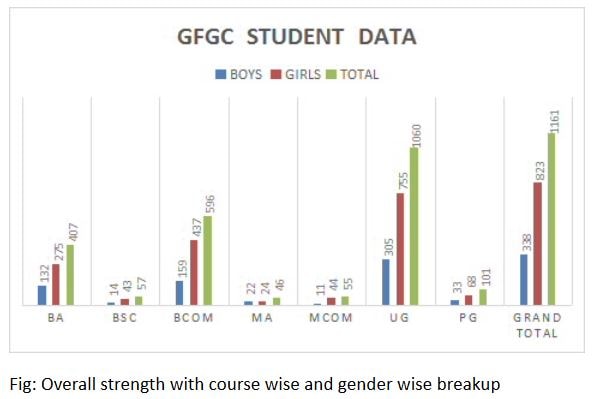 The students are from villages located at an average distance of 20 kms from the college. The Institution is offering both Postgraduate (PG) and Undergraduate (UG) courses. PG courses offered in this college are M.A. in History, Economics, English and Kannada and M.Com., with currently101 students in all. As for UG courses, the institution is offering BA, BSc and BCom with 1060 students in all. Following the corona crisis and the resultant lockdown, the GFGC too resorted to internet based reach out to their PG as well as UG students. We conducted a survey of 20 faculty members (out of 21) and 724 students in May –June 2020 with the objective of gaining insights into the effectiveness of online and internet based teaching and the challenges faced by both faculty and students. The survey revealed that the methods used by faculty to reach out to students included – sending reading notes over email and whatsapp, youtube videos, jnana nidhi (a youtube channel), whatsapp videos and website. Sharing reading notes turned out as the most used method by faculty members to reach out to students with 66% of all methods. Each faculty on an average reached out to students about 30 times using the above methods. The faculty used collaboration tool ZOOM for their own internal meetings. Creating videos of lessons without professional help was seen as an issue. About 60% of the faculty felt that it was difficult for them to create videos using their mobile phones. Even though 80% of the faculty stay at District Headquarters, none of the faculty members subscribed to fixed line broadband and instead all of them relied on mobile wireless data connectivity from service providers JIO and Airtel. The absence of fixed broadband also rules out the convenience of the usage of WiFi at home. Sixty percent of the faculty mentioned that they face signal issues to connect to internet. Power issues were faced by about 75% of the faculty, while 35% of the faculty had UPS at home. Majority of the issues faced by faculty members were to do with poor data connectivity. They also felt that a recording lab is necessary to create professional videos of their teaching. Some faculty members mentioned about the need to train and increase awareness about Online Teaching Content (OTC) amongst the students.
The students are from villages located at an average distance of 20 kms from the college. The Institution is offering both Postgraduate (PG) and Undergraduate (UG) courses. PG courses offered in this college are M.A. in History, Economics, English and Kannada and M.Com., with currently101 students in all. As for UG courses, the institution is offering BA, BSc and BCom with 1060 students in all. Following the corona crisis and the resultant lockdown, the GFGC too resorted to internet based reach out to their PG as well as UG students. We conducted a survey of 20 faculty members (out of 21) and 724 students in May –June 2020 with the objective of gaining insights into the effectiveness of online and internet based teaching and the challenges faced by both faculty and students. The survey revealed that the methods used by faculty to reach out to students included – sending reading notes over email and whatsapp, youtube videos, jnana nidhi (a youtube channel), whatsapp videos and website. Sharing reading notes turned out as the most used method by faculty members to reach out to students with 66% of all methods. Each faculty on an average reached out to students about 30 times using the above methods. The faculty used collaboration tool ZOOM for their own internal meetings. Creating videos of lessons without professional help was seen as an issue. About 60% of the faculty felt that it was difficult for them to create videos using their mobile phones. Even though 80% of the faculty stay at District Headquarters, none of the faculty members subscribed to fixed line broadband and instead all of them relied on mobile wireless data connectivity from service providers JIO and Airtel. The absence of fixed broadband also rules out the convenience of the usage of WiFi at home. Sixty percent of the faculty mentioned that they face signal issues to connect to internet. Power issues were faced by about 75% of the faculty, while 35% of the faculty had UPS at home. Majority of the issues faced by faculty members were to do with poor data connectivity. They also felt that a recording lab is necessary to create professional videos of their teaching. Some faculty members mentioned about the need to train and increase awareness about Online Teaching Content (OTC) amongst the students.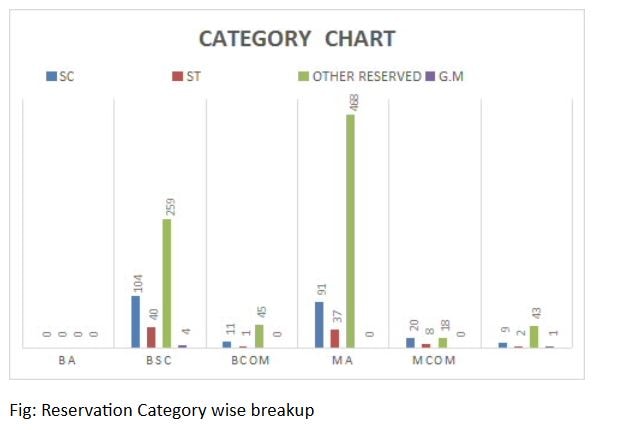
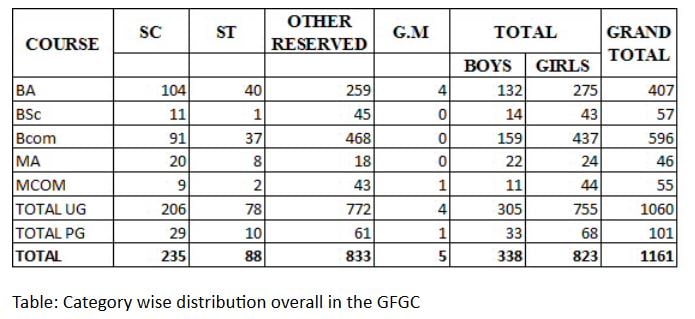 Telephonic survey of 534 girls (73%) and 190 boys (27%) was conducted in the month of May-June 2020. Except one student the other students belonged to SC/ST and other reserved categories. 204 students belonged to SC/ST category (28%). after repeated attempts to reach out to students we were able to reach only 300 students and survey response was obtained from them. This comprised 77 PG students (1st year MA History and Commerce, 2nd year MA Economics, Kannada and Commerce) and 223 from UG (2nd and 3rd year BA, BCOM and BSc). A significant 424 students (58%) not being able to be contacted, has to be seen as a major issue in the context of device and connectivity challenges in rural areas. Also, 68% amongst the students belonging to SC/ST category and 54% amongst the other reserved categories could not be reached.
Telephonic survey of 534 girls (73%) and 190 boys (27%) was conducted in the month of May-June 2020. Except one student the other students belonged to SC/ST and other reserved categories. 204 students belonged to SC/ST category (28%). after repeated attempts to reach out to students we were able to reach only 300 students and survey response was obtained from them. This comprised 77 PG students (1st year MA History and Commerce, 2nd year MA Economics, Kannada and Commerce) and 223 from UG (2nd and 3rd year BA, BCOM and BSc). A significant 424 students (58%) not being able to be contacted, has to be seen as a major issue in the context of device and connectivity challenges in rural areas. Also, 68% amongst the students belonging to SC/ST category and 54% amongst the other reserved categories could not be reached. Students need to be informed that the OTC is being made available for them to access it. With 58% of the students not being able to be contacted, these significant number of students are unlikely to be aware of the OTC being shared and hence are unlikely to have accessed the OTC. Significantly, there were 88 students out of 424, who did not have any contact number at all. Hence, these students get excluded making it difficult for them to get any information about OTC, leave alone being able to access it. It is observed that the PG and BSc students were more accessible than in other disciplines.
Students need to be informed that the OTC is being made available for them to access it. With 58% of the students not being able to be contacted, these significant number of students are unlikely to be aware of the OTC being shared and hence are unlikely to have accessed the OTC. Significantly, there were 88 students out of 424, who did not have any contact number at all. Hence, these students get excluded making it difficult for them to get any information about OTC, leave alone being able to access it. It is observed that the PG and BSc students were more accessible than in other disciplines.
Significantly, 48% of the overall students who responded to survey say that there is mobile network problem. Students go to nearest town or nearest GP or sometimes to some farm area to get network signal. When asked about why students cannot access internet in cyber centers, 38% of the students say that they do not have any access to cyber cafe, while 45% of the students have a cyber center within 10kms from home. With students on an average having to travel about 20 kms (one way) to reach college, it is evident that most students live in remote areas making it difficult especially for girl students to access cyber cafes. One of the methods used by faculty to share OTC is through email. But it is found that only 31% of the student respondents use email regularly and 8% use it less frequently. In the absence of laptops or desktops, at least good smartphones with big enough screen size is required to access OTC. Among those who have responded about 80% of the students have access to smartphones with screen size of 5 inches and above.
Not surprisingly, most of the students feel that regular classes are better than online classes. Only 60% of the responded students (25% of the overall number of students) were able to view the classes comfortably. 92% of the students felt that there was no need for the online classes to continue next year (once the current corona virus crisis is over). However, 45% of the respondent students indicated that they would welcome other non-syllabus skill building classes to be delivered online.
The survey reveals that the main challenge the rural students face can be attributed to poor data connectivity and lack of Laptops/Desktops to access the online classes. Last year, the Government of Karnataka has introduced a scheme to provide laptops to students in the GFGCs to first year degree students. The students can then use the laptop to access the OTC if there is proper internet access. The Government of India launched the Bharatnet scheme to connect all the 2.5 Lakh GPs (Gram Panchayat) and provide WiFi and fiber based internet connectivity for rural households and institutions. The project has been delayed and only 28,000 GPs are in a position to offer services to customers. WiFi connectivity is available in about 23,000 GPs so far. Provision of WiFi in villages will be most beneficial to the students as they can connect their laptops and access the OTC. The mobile wireless operators JIO, Airtel and IDEA have expressed interest and approached BBNL (Bharath Broadband Network Limited) to use the fiber connectivity from Taluka to GP. This backhaul bandwidth will help the service providers to provide high speed mobile wireless at the villages if implemented properly. The direct FTTH connection along with the high speed mobile wireless connection will ensure that the rural citizens have data connectivity options. It will also mean that BBNL would meet its vision of digital empowerment of rural citizens. However, the challenges of technology rollout, management and maintenance in a timely manner will also need to be addressed so that consistency of service is ensured. The various stakeholders and Government agencies such as BBNL, BSNL and service providers need to work in tandem utilizing Universal Service Obligation fund (USOF), resolve contentions and disputes in a timely manner in order to achieve the set goals.
We enquired with three GPs in the Tiptur taluk of Karnataka and found that they all have Bharatnet Fiber connectivity since the past 2 to 5 years. They are all configured for the plan – “30gb CUL Bharat Fiber” by BSNL providing 16mbps speed. But the connection is used only by the GP for its various online data entry purposes. The connection is not yet extended to rural households and Institutions. WiFi hotspot is also not made available, though during lockdown WiFi was configured temporarily for the benefit of a few local village students in one of the GPs. The outbreak of corona virus and the resultant difficulties accentuates the desperate need for good data connectivity in rural areas. Timely implementation of Bharatnet could have helped people in rural areas significantly to face the challenges during lockdown.
Bharatnet can address the current inequity created not only among rural and urban but also between boys and girls as well as people belonging to different social categories. Even after the Covid 19 situation returns to normal, there will be opportunities for some part of the educational and training content that can be delivered online to various segments, apart from creating opportunities for ecommerce, agriculture extension, healthcare, skill development and employment. Resorting to online mode of imparting education may become a formal disaster management fallback measure in future. All this calls for the urgent need to provision reliable broadband data connectivity in rural areas. Corona outbreak should serve as a harsh reminder that it needs to be taken up on a war footing without any more delay.
1 Gopal Naik is Professor and Narasinga Rao Project Consultant at IIM Bangalore.
2 This disproportionate gender ratio can be attributed to the free education and various benefit schemes specially for girls in Government colleges, girls doing better in schools in rural areas and parents’ preference to send girls to local liberal arts colleges.
First Published: Sep 07, 2020, 11:05
Subscribe Now